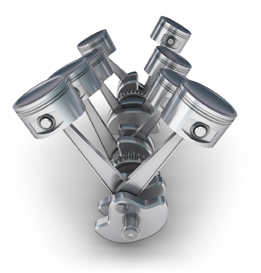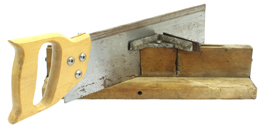Lesson 1
1. Lesson 1
1.7. Explore 3
Module 6: Measurement

iStockphoto/Thinkstock
The more precise a measurement is, the easier it is to accurately reproduce the measurement.
precision: the smallest measurement on the measuring device being used
Source: MathWorks 12 Student Book/Teacher Guide.
(Vancouver: Pacific Educational Press, 2011.)
Choosing the right device in measuring length is important. When marking the length of a football field, a device with a precision of 0.1 cm is not needed—a field that is off by millimetres is unlikely to affect the outcome of a game. When measuring the outside diameter of a crankshaft in an engine, a device with a precision of 0.01 cm or smaller should be used, because the crankshaft will need to fit tightly with other engine parts.

© Bert Folsom/17461115/Fotolia
This jig is used to cut the end of a board to a 45° angle.
When doing repetitive work, carpenters will often set up a jig. A jig is a good tool to use to cut the same measurement many times and ensure the same amount of accuracy. A jig is an invaluable tool, which you may be able to create yourself. For example, panel cutting jigs ensure that a panel is cut square to the bottom edge of the board. Circle cutting jigs allow you to cut perfect circles out of stock. Tapering jigs let you cut tapered legs on a table saw.
Self-Check 2
State the precision of each of the following measurements: ![]()
Measurement Tool |
Measurement |
Precision |
Metric Ruler |
23.6 cm |
____ cm |
Graduated Cylinder |
73 mL |
____ mL |
Micrometre |
6.91 mm |
____ mm |
Yardstick |
31.6 in |
____ in |
Thermometer |
25.7°C |
____°C |
Stopwatch |
13.47 s |
____ s |